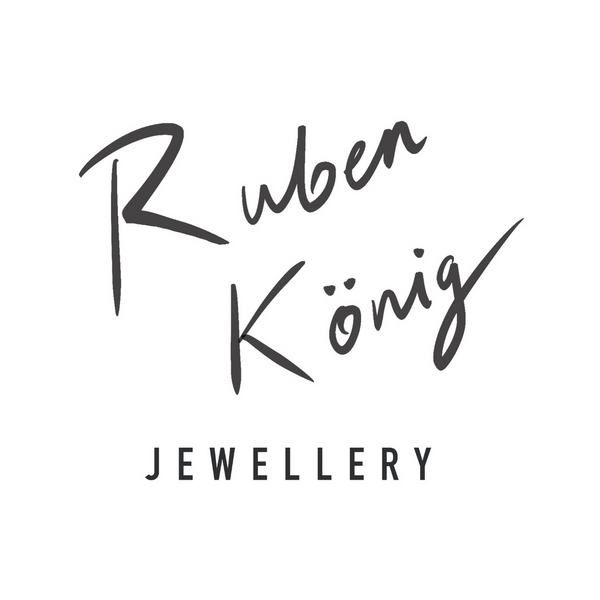Your simplified guide to Diamonds
Diamonds are one of the wonders of nature. Produced through extreme heat and pressure between 3.5 million and 350 million years ago. These magnificent little blocks of carbon can be faceted into what we know as Diamonds, with their unique property 'total internal reflection' being one of the main draws for consumers. This property means that light enters the stone, is bounced around and then is returned to the viewer, giving us the sparkle we love.
Diamond is the hardest natural material known, it is 10 on MOH's scale of hardness. Diamond does however have directional hardness, which means that it is harder in certain directions than others. This is particularly useful when cutting diamonds, as they can only be cut against one another.
Diamonds are commonly classified using the 4 C's. Carat, Cut, Clarity, Colour.
CARAT
The Carat refers to the weight of the stone only, not the size, which is a common misconception. One Carat is equivilent to 0.2g to put it into some terms we cna comprehend. In the case of Round Brilliant Cut Diamonds, the size and weight are usually linked to some extent if the stone is well cut. We know that gnenerally speaking a 5.0mm round Diamond should weigh approximately 0.50ct. However, when a stone is cut too deep it can harbour carat weight in the belly or underside making it heavier. If a stone is cut too shallow, it will spread bigger than it weighs, making it appear larger face up but less in carat weight. Sometimes stones can be more expensive when they go past certain points, for instance a 50 point stone (0.50ct) would cost more than say a 45 point stone because the former can also be referred to as 'Half a Carat'.
CUT
The Cut of the stone will consider how well proportioned the stone and the facets (cuts) are in relation to an optimum cut. A well cut stone will give a brighter sparkle as the facets allow the light to be perfectly internally reflected. Like we touched on above under 'Carat', some stones can be cut too deep or too shallow. When a stone is cut too deep, the unique property 'total internal reflection' is lost. This is because light is lost through the back of the stone and not returned to the viewer. These stones appear to look black or dead in the middle (table) when viewed face up as the light is lost, leaving a darker centre known as a 'Nail Head'. Similarly, shallow cut stones also lose light due to being cut to the wrong angles. The light is again lost and not returned to the viewer making them look dull, just like deep stones. These shallow stones have what is known as a 'fish eye' effect, this is where you see a reflection of the girdle (rounded outside edge of the stone) reflected around the table. It is important to consider getting a stone that is a minimum of 'Good' if not 'Very Good' or 'Excellent' to ensure you get a bright return of light from your stone.
CLARITY
The Clarity looks at any inclusions within the stone, in plain terms these can look like miniature feathers or tiny black dots among others. A common misconception is that these black marks are 'Carbon Spots', uneducated jewellers will tell you this, but it is wrong. As Diamonds are formed from Carbon it is impossible for them to have Black Carbon trapped inside them that is visible like this. Instead these Black inclusions are usually another impurity such as Magnetite. These inclusions could be seen a natural unique bithmark, as no two stones will ever be quite the same.
The best stones can be referred to as 'Internally Flawless', see the chart below for examples of what you can expect to see inside different clarity grades. Bearing in mind that anything above 'I' can only be seen under 10x magnification.

COLOUR

'FANCY' COLOURED DIAMONDS
Diamonds can occur naturally in many different colours such as Blue, Red, Yellow, Brown, Orange, Green and Pink. Yellow Diamonds are caused by a larger amount of Nitrogen being present within the stone, generally these stones are classed as Type 1 (including 1A & 1AB) Diamonds, of which these stones make up 98% of all Diamonds, which we grade on a colourless to Yellow spectrum as mentioned above. When natural Diamonds are past the scale above and the colour is deeply saturated they are referred to as 'Fancy'. These natural 'Fancy' coloured diamonds generally command more of a premium than colourless spectrum stones, but again there are many factors at play here.
Brown and Pink Diamonds have their colouration induced by 'Plastic Deformation', this is caused by the Diamond being put under additional pressure when it formed in nature. In this case the ionic bonds that are part of the stone have been distorted, which is why we perceive these colours.
Blue Diamonds are slightly different, these have been formed with Boron present within the stone. The more Boron, the more Blue the stone looks. Strangely, these Diamonds are also electrically conductive as Boron acts as a conductor.
Green stones have been subjected to Natural irradiation while they have been sat in the earth's crust. This does not make them radioactive, but does give them their colour which can sometimes look the shade of a highlighter, right down to more muted forest Green hues.
Many coloured Diamonds started life as colourless spectrum stones that have been heat treated to provide the colour within the stone, this is perfectly normal and is a stable treatment (meaning it won't face over time).
If you would like to learn more about any of these topics including Fancy coloured Diamonds please refer to the 'Blog' link above.
